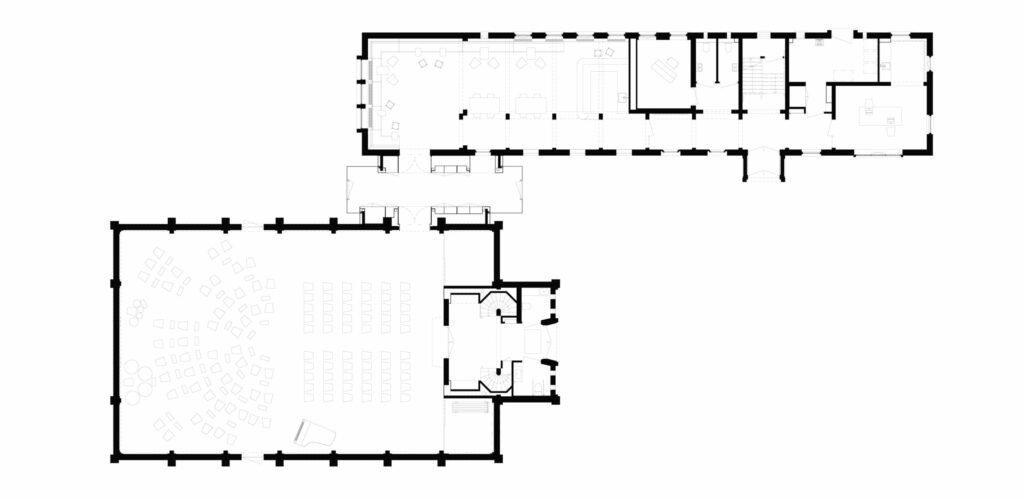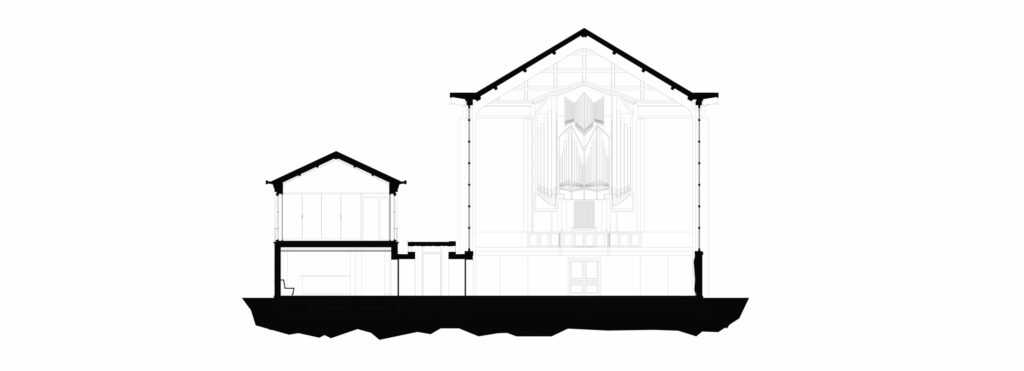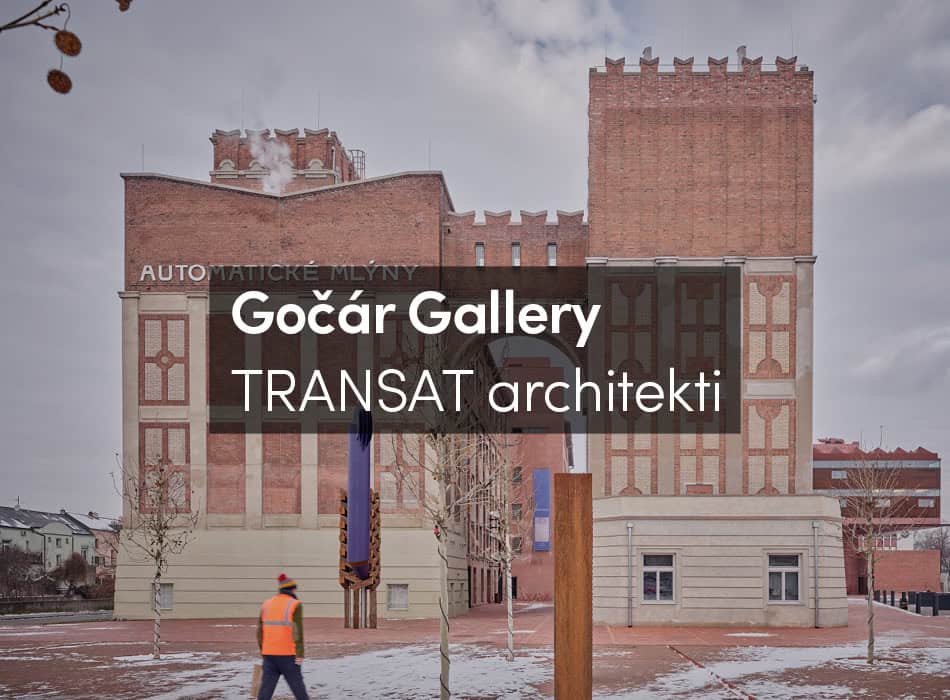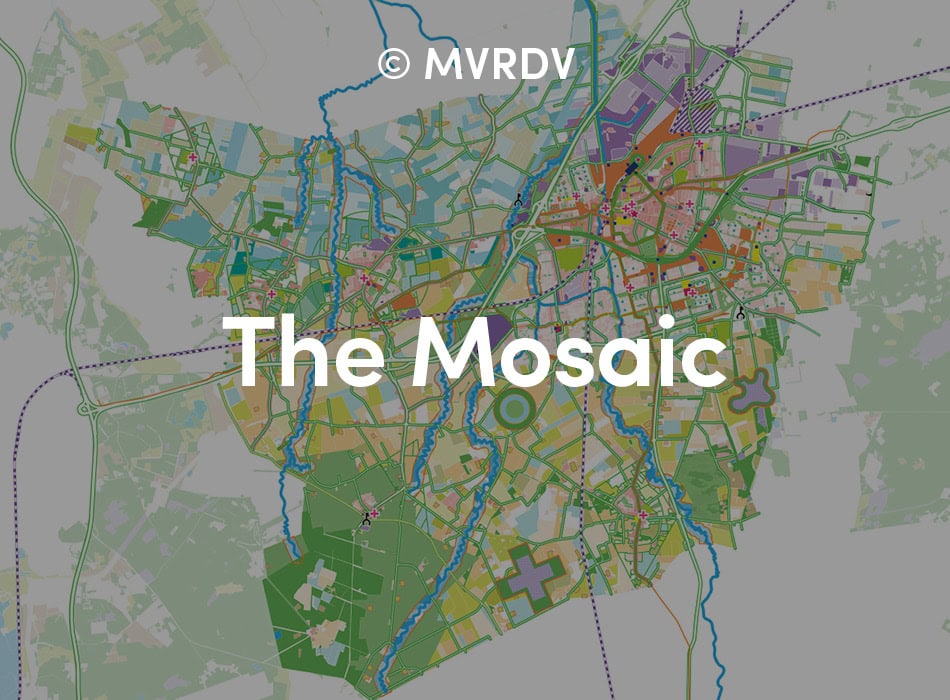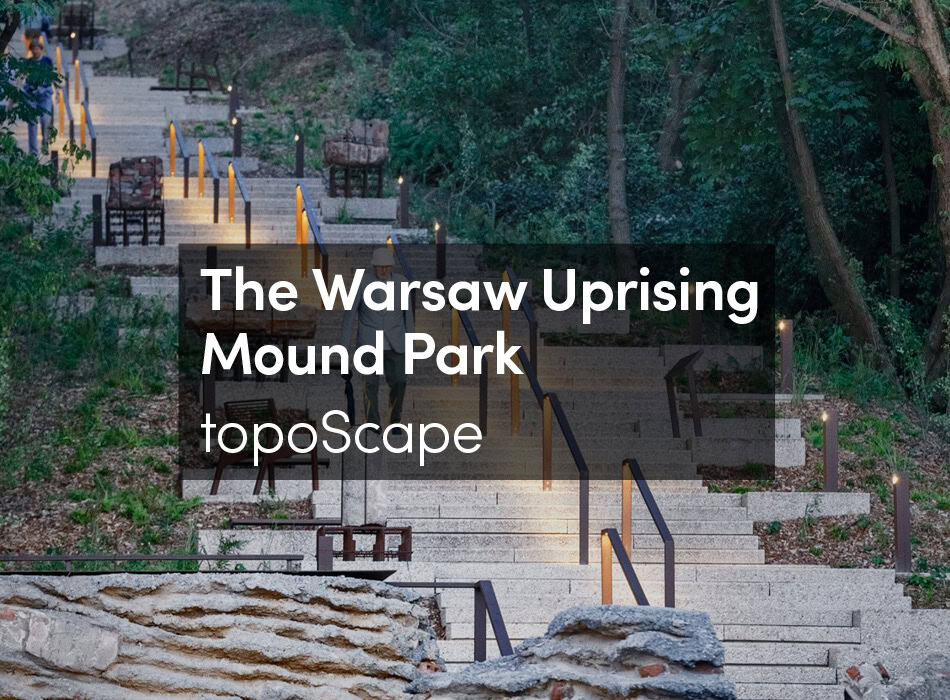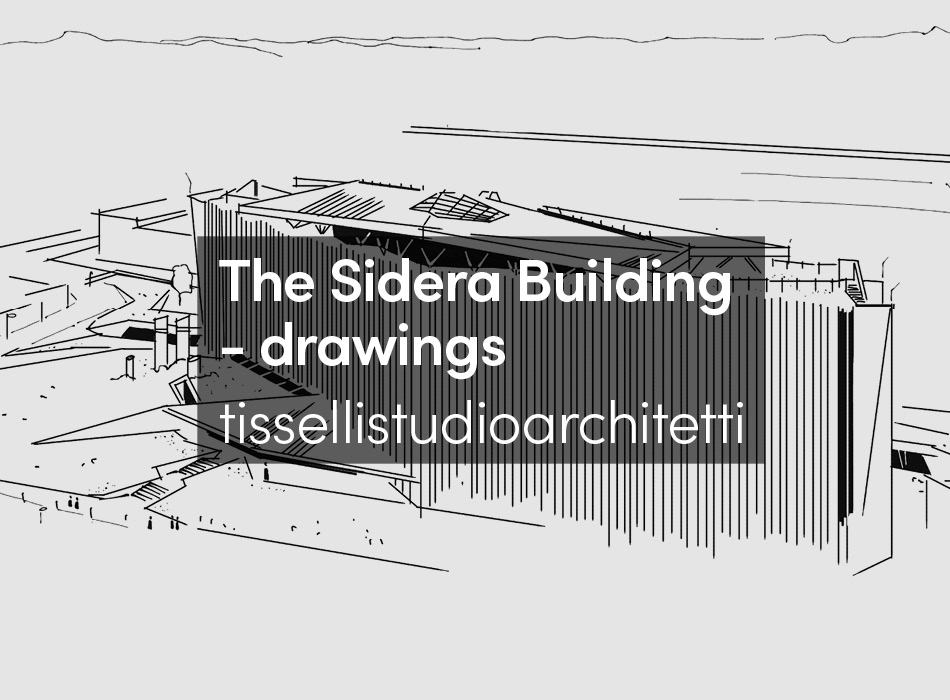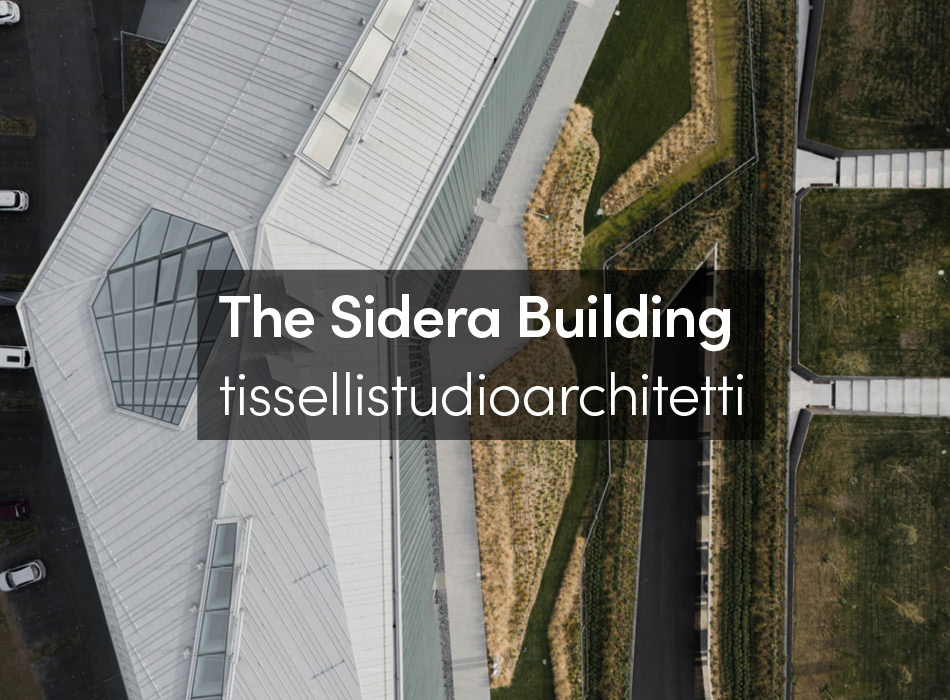Droom en Daad, dedicated to preserving Rotterdam’s cultural heritage, entrusted Powerhouse Company with revitalizing this post-war gem while providing a state-of-the-art facility for future generations of musicians. Built in 1951, the Mennonite church holds historical significance, and Powerhouse Company embraced this by retaining key features, including the iconic 1954 Flentrop organ. This instrument offers unique opportunities for young musicians and concerts. The redesign highlights expressive details like grand chandeliers, which illuminate the former church hall, while the original cassette ceiling in plastered concrete remains the foundation of the new music hall.
“Our goal was to transform this imposing concrete structure into an inviting and comfortable space for its new users, making this post-war gem shine again”
Nanne de Ru, Founder, Powerhouse Company
The architects adopted a circular approach in the transformation, focused on sustainable and responsible preservation. Original church pews have been transformed into seating and paneling in the foyer, while slate floor tiles from the church hall were repurposed for the entrance and baseboards. Instead of replacing the wooden window frames, they were carefully restored to maintain the building’s heritage. Sustainable materials were a shared priority between the client and the design team. Recycled PET bottles were used in making the colorful chairs, and original Bakelite door hardware and lamps were restored. New ton-sur-ton tiles complement the restored original tiling, while climate-positive marmoleum flooring and recyclable PVC roofing add further eco-friendly features to the building.
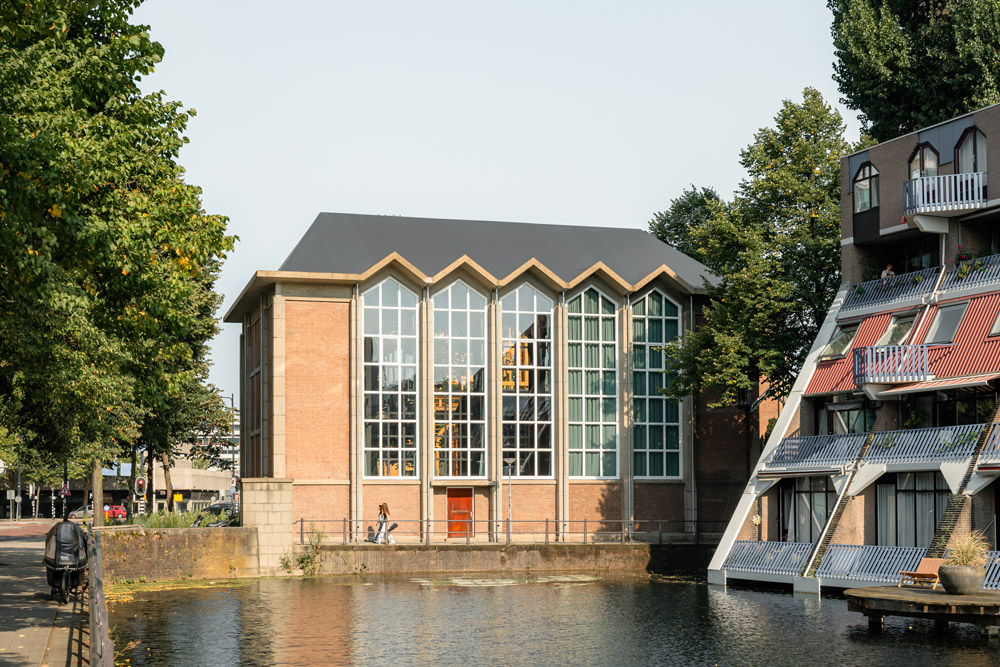

Each space within Muziekwerf was custom-designed, as no two rooms are the same. This required a tailored approach, including advanced acoustic solutions to manage noise within the concrete structure. The result is a harmonious blend of old and new, with soft color palettes and raw concrete textures revealing the building’s layered history. Elements like clouds in plaster, concrete window frames, and original tiles blend with 1950s-inspired touches, creating a space where past and present meet.
To enhance comfort, underfloor heating was installed in the music studios, eliminating the need for radiators in front of the windows and providing a connection to the outdoors. Ceiling radiant panels in larger spaces kept the concrete trusses visible, while a restrained color palette in the new music hall, rehearsal studios, and piano studio ensures a modern but respectful homage to the building’s historical essence. Natural light is maximized with the use of blue velvet curtains and light-mirroring glass on the balcony, illuminating the upper portions of the post-war structure. Light oak floors and sound-scattering panels create a warm, inviting space, subtly nodding to the church benches that once filled the music hall.
“Our design ensures a clear and fresh interior that creates a comfortable and inspiring environment. As music fills the air, Muziekwerf truly comes to life”
Franca Houg, Architect, Powerhouse Company
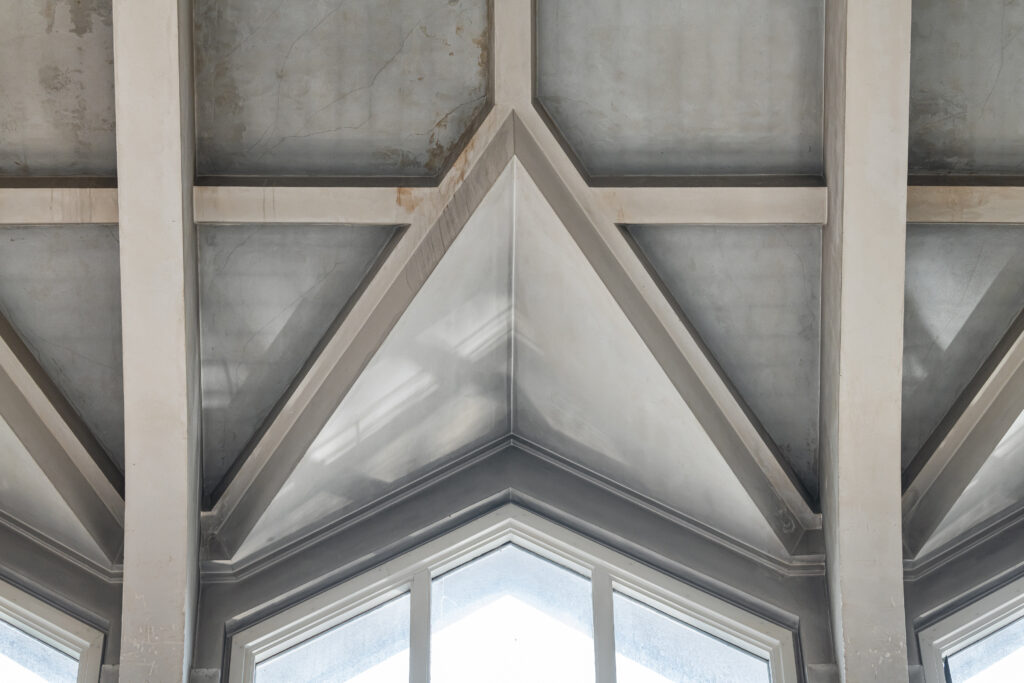

Nestled amidst tall buildings and adjacent to a tranquil waterway, Muziekwerf offers a retreat from the bustling city center. Once a hidden, clandestine church, the building has now opened up to the urban environment. The new front entrance, inspired by water reflections, features an undulating ceiling of reflective material. This intermediate structure—the project’s only new construction–seamlessly integrates with the original structure leading to a welcoming foyer, offices, and music studios. The church benches were repurposed, and larger windows were introduced, creating a stronger connection to the surrounding public square and inviting the outside in. For decades, the church building was hidden from the public. Powerhouse Company and Droom en Daad are proud to reveal Muziekwerf as a cultural center for Rotterdam’s youth. This transformation demonstrates how heritage and contemporary design can unite to foster creativity in the next generation of musicians.
“We’re proud that Muziekwerf provides young musicians with an inspiring space to develop their talents. Together with Powerhouse Company, we succeeded in preserving the building’s heritage and creating a place where creativity and diversity flourish”
Roswitha Abraham, Director Muziekwerf, Stichting Droom en Daad
